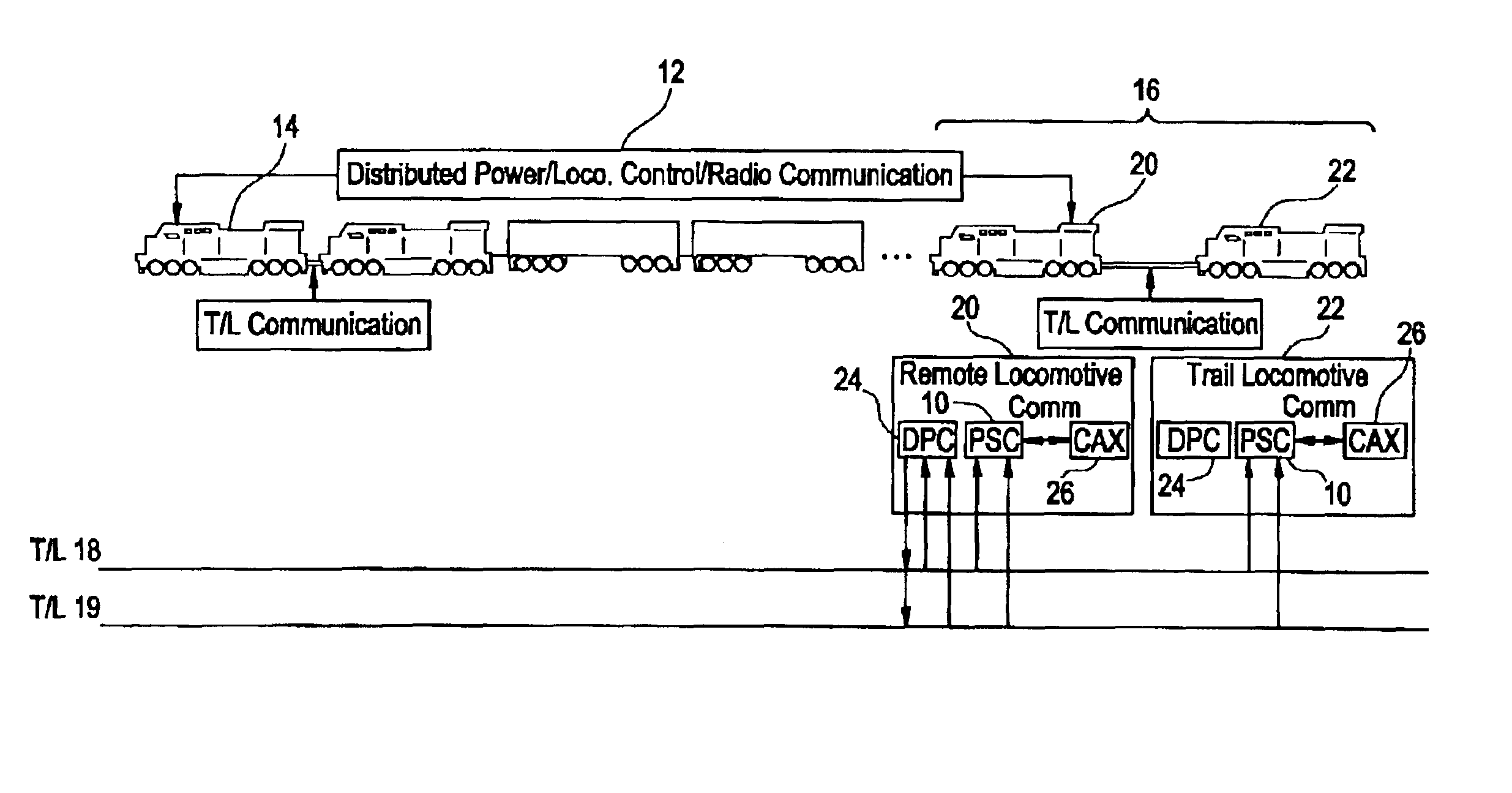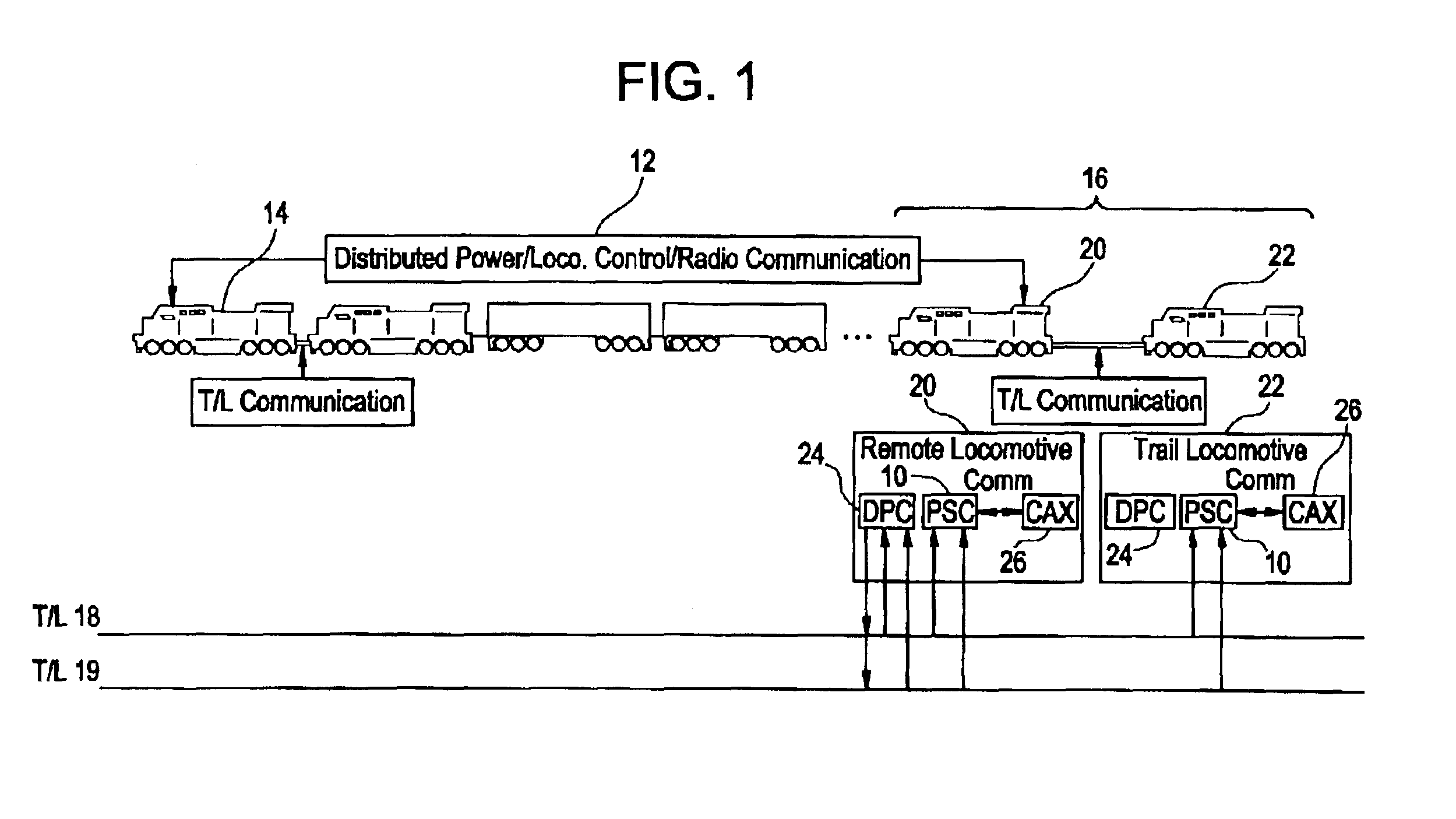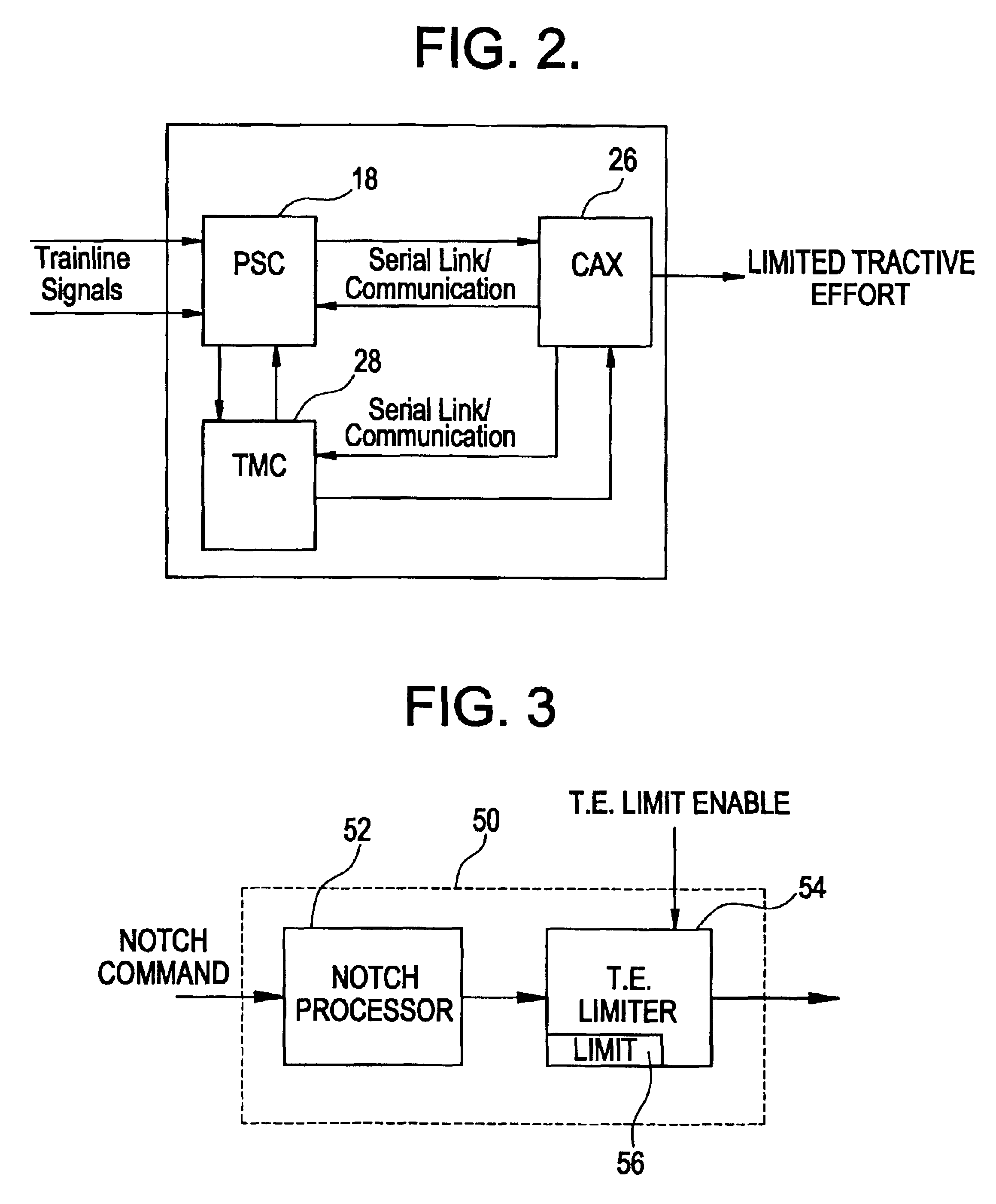System and method for selectively limiting tractive effort to facilitate train control
a technology of tractive effort and selective limitation, applied in the direction of process and machine control, railway components, computation using non-denominational number representation, etc., can solve the problems of affecting the operation of the train, lifting or derailment of one or more cars, and uneven tonnage distribution
- Summary
- Abstract
- Description
- Claims
- Application Information
AI Technical Summary
Benefits of technology
Problems solved by technology
Method used
Image
Examples
Embodiment Construction
[0012]In one exemplary embodiment, a propulsion system controller 10 (PSC) onboard each locomotive may be responsive to tractive-effort control signals generated in response to commands wirelessly communicated with locomotive communication equipment 12 (e.g., referred to in commerce as Locotrol® Distributed Power Communication Equipment) from a lead locomotive 14 relative to a remote consist 16. By way of example, consist 16 is shown to be made up of a remote locomotive 20 and a trail locomotive 22. It will be appreciated that the present invention is not limited to the consist arrangement shown in FIG. 1 since many other consist arrangements may be provided depending on the specific train application. As will be described below, respective controllers on-board each locomotive, such as distributed power controller (DPC) 24, primary locomotive controller 26 (CAX), the PSC controller and the communication equipment may be configured with appropriate control algorithms to selectively l...
PUM
 Login to View More
Login to View More Abstract
Description
Claims
Application Information
 Login to View More
Login to View More - R&D
- Intellectual Property
- Life Sciences
- Materials
- Tech Scout
- Unparalleled Data Quality
- Higher Quality Content
- 60% Fewer Hallucinations
Browse by: Latest US Patents, China's latest patents, Technical Efficacy Thesaurus, Application Domain, Technology Topic, Popular Technical Reports.
© 2025 PatSnap. All rights reserved.Legal|Privacy policy|Modern Slavery Act Transparency Statement|Sitemap|About US| Contact US: help@patsnap.com



